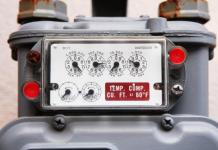Baseball is a sport that has been played for centuries and has since become one of the most popular sports in the world. A baseball field is the heart of the game, where the players come together to compete and showcase their skills.
In this article, we will take a deep dive into the world of baseball field, exploring their design, layout, and dimensions. We will cover everything from the history of baseball fields to the materials used to construct them. By the end of this article, you will have a comprehensive understanding of baseball fields and what makes them so special.
History of Baseball Fields
Baseball fields have been around since the early days of the sport. The first known baseball field was the Elysian Fields in Hoboken, New Jersey. It was here that the first official baseball game was played in 1846. The Elysian Fields was a large open field, without any defined dimensions or layout.
As baseball became more popular, teams began to establish their own fields. These fields varied in size and layout, but they all had one thing in common: they were designed for baseball. In 1858, the National Association of Baseball Players (NABBP) was formed. And they established rules for the dimensions and layout of baseball fields.
Dimensions of a Baseball Field
The dimensions of a baseball field are one of the most important aspects of the game. They are defined by the playing field, which includes the infield, outfield, foul territory, and home plate area. The distance between the bases is 90 feet, while the distance from home plate to the pitcher’s mound is 60 feet 6 inches.
The infield is a square with sides that are 90 feet long.. The bases are placed at each corner of the infield, and the pitcher’s mound is placed in the center. The outfield is the area beyond the infield and is typically surrounded by a fence or wall. The distance from home plate to the outfield fence varies depending on the level of play.
The layout of a Baseball Field
The layout of a baseball field is designed to provide a fair and competitive playing environment. The infield is where most of the action takes place, and it is divided into several areas.
The pitcher’s mound is located in the center of the infield and is where the pitcher stands to deliver the ball. The area immediately surrounding the pitcher’s mound is called the “rubber,” and it is where the pitcher must keep one foot while delivering the ball.
Behind the pitcher’s mound is the “backstop,” which is typically a fence or wall that catches any wild pitches or foul balls. To the left and right of the infield are the “foul lines,” which extend from home plate to the outfield fence. Anything hit outside of the foul lines is considered a foul ball.
Materials Used to Construct a Baseball Field
The materials used to construct a baseball field are critical to its success. The infield is typically made of clay, while the outfield is made of grass. The pitcher’s mound is also made of clay and is typically built up to be slightly higher than the surrounding infield.
The backstop is usually made of chain-link fence or another type of durable material that can withstand the impact of baseballs. The outfield fence can be made of various materials, including wood, chain-link, or vinyl.
Maintaining a Baseball Field
Maintaining a baseball field is essential to its success. The infield must be raked and watered regularly to maintain its consistency and prevent it from becoming too hard or too soft.
The pitcher’s mound must also be maintained to ensure that it is level and the proper height. In addition to maintaining the physical elements of the field, it is important to keep it clean and free of debris.
Different Types of Baseball Fields
There are several different types of baseball fields, each designed for different levels of play. Little League fields are smaller than regulation fields, with shorter base paths and a smaller outfield.
College and professional fields are larger and have longer base paths and a larger outfield. There are also indoor baseball fields, which are used for practice and training during inclement weather.
The Importance of Baseball Fields
Baseball fields are more than just a place to play a game. They are a source of pride for teams and communities, and they bring people together. Baseball fields are where memories are made and where dreams are realized. They are a symbol of the hard work and dedication that goes into playing the sport of baseball.
FAQs
Why are baseball fields so important?
Baseball fields are important because they provide a place for teams to play and compete, and they are a symbol of the sport and the community that surrounds it.
How do you maintain a baseball field?
To maintain a baseball field, it is essential to regularly rake and water the infield, mow, and water the outfield grass, and keep the field clean and free of debris.
What are the dimensions of a baseball field?
The distance between the bases is 90 feet, while the distance from home plate to the pitcher’s mound is 60 feet 6 inches.
What materials are used to construct a baseball field?
The infield is typically made of clay, while the outfield is made of grass. The backstop is usually made of chain-link fence or another durable material, and the outfield fence can be made of wood, chain-link, or vinyl.
What are the different types of baseball fields?
There are several different types of baseball fields, including Little League fields, college and professional fields, and indoor baseball fields.
Conclusion
In conclusion, a baseball field is more than just a patch of grass and dirt. It is a carefully designed and constructed playing surface that is essential to the game of baseball. From the dimensions and layout to the materials used to construct it, every element of a baseball field is important. Maintaining a baseball field is essential to its success and longevity. Baseball fields are more than just a place to play a game; they are a symbol of the sport and the community that surrounds it.
Mormon Cricket: Guide to Understanding This Insect Pest


